6 Major Ports Of Madagascar
Madagascar is an island nation in the Indian Ocean and is considered a biodiversity hotspot. It is one of the most underdeveloped countries with a significant proportion of its population living below the poverty line.
The main contributors to the nation’s economy are the tourism sector, agriculture, mining and textiles. However, increased corruption and poor infrastructure development have discouraged economic growth.
The nation’s trade and shipping sector has enormous scope, given the geographical location of the nation amidst a major trade route in the Indian ocean.
Though Madagascar has 17 ports most of them have dilapidated infrastructure and require immediate maintenance.
In this article, let us have a look at some important ports in Madagascar.
Port of Toamasina
Toamasina port is Madagascar’s major port facility handling about 80% of the nation’s international maritime traffic. It is situated on Madagascar’s eastern coast facing the Indian Ocean. The port handles approximately 1,600,000 tonnes of cargo and 18,900 TEU every year.
Toamasina port has been operational since the late 18th century and was used by the French for carrying out their trade operations in the Indian Ocean. Presently, the port harbour is huge and naturally well-sheltered with reef formations on either side. It has two broad entrance channels; however, only the northern channel is currently used.
The port handles diverse shipments such as cement, gravel, wheat flour, edible oil, urea, textiles, grains, cereals, chrome ores, wood, coffee, spices, vanilla, sugar, seafood containerised goods, petroleum and its derivatives, conventional and heavy cargo, and passenger ships.
It is well-linked with key roadways and railways thus enabling smoother trading operations and efficient distribution of import goods. It is mainly a container handling facility as 75% of its cargo comprises containerised goods. The port’s container terminal is one of the biggest facilities in the region spanning 140,000 m2, with per day storage capacity of around 7000 TEUs.
It is Madagascar’s busiest port and contributes greatly to the nation’s economy by promoting trade, commerce and investments in the country’s shipping sector. Currently undergoing expansion, the port’s cargo throughput is expected to rise by 2.5 million tonnes, after the completion of the project. The port is owned by a public enterprise however its container facility is privatised.
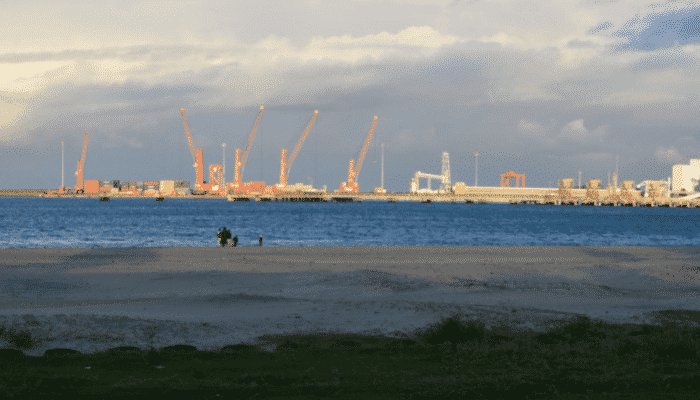
The port comprises two general cargo berths measuring 185 m and 210 m with a draft of 9 m and 10.4 m respectively. One of them is used for handling ro-ro. Another container handling berth is 290 m long with a 10.5 m draft. The port also has a separate silo facility for handling bulk. A 70 m long berth for handling petroleum products is situated at a distance from the main port area. It can accommodate oil tankers with a length of 250 m.
The port can accommodate ships with a draft not more than 9.5 m and weighing about 50,000 tonnes. However, work is underway for extending the berth length by 450 m which would increase the draft to 15 m. After completion, ships weighing more than 70,000 tonnes could also berth at the port.
The port equipment is fully operational and includes 5 shore cranes with a lifting capacity of 100 million tonnes, 6 rubber-tired cranes, 3 handlers, 4 forklifts with a 5-10 million tonne lifting capacity, 12 trailers and 14 tractors.
Tomasina port is equipped with the latest port management systems at par with global standards. A shipyard is also located at the port, for the repair and maintenance of decent-sized vessels and carriers.
The port has a storage area spanning 24 hectares, including an unsheltered storage space spanning 11 hectares, 121 reefer plugs, and cold storage facilities for packaged and perishable products. 2 tanks for keeping grain with a capacity of 19,000 tonnes and 31,000 tonnes are situated near the main port area. The port also has 3 tanks for storing oil, LPG etc.
Port of Antsiranana
Situated in the northern part of Madagascar, Antsiranana port is regarded as one of the biggest port facilities in the island country. It handles around 195,000 tonnes of cargo annually. The port exports agricultural items such as coffee beans, cotton, cocoa, essential oils, pepper, vanilla, cacao, cashew nuts, seafood such as canned tuna, sea cucumber, and salt. It was also known as an important fishing port as the volume of seafood handled grew manifold in recent years. However, presently the port handles mostly containerised cargo.
This port has been operational since the late 16th century. It also served as a military headquarters for the French during the 19th century. Presently, the port is important for the distribution of essential goods to the natives in nearby regions, especially during monsoon months.
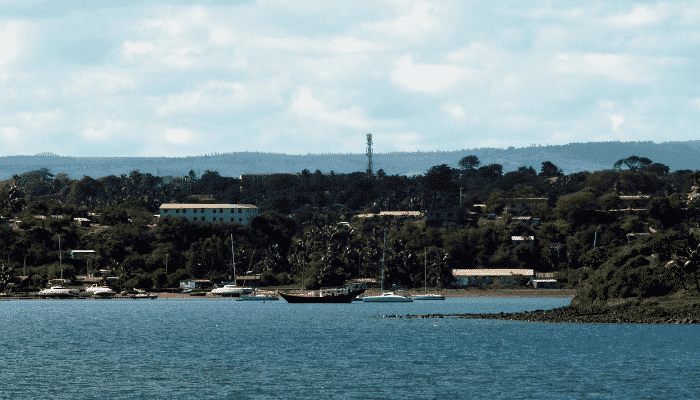
The port spans 35,000 sq m, including 15,500 sq m of open yard space. The average water depth near the berth is 8 m. A navy port base and a shipbuilding facility are located near the port. There is one wharf at the port, measuring around 400 m. On the southern side, the dock receives small vessels. The mooring facilities are on the northern side of the wharf where ocean-going ships are received.
The port has two cold storage facilities, spanning more than 4000 sq m for keeping perishable food items. One storage warehouse for storing conventional cargo is also available, covering 3400 sq m. Containers are stacked in the open yards.
The port is equipped with 4 reach stackers and 2 shore cranes that aid in container handling operations.
Port of Toliara
Toliara port is located on the southwestern coast of Madagascar. The port deals with diverse cargo however the main import commodity is cement while major export products comprise wood, timber, maize, cassava, seafood, mica, labradorite, sisal etc. The port receives ships on its main dock along with tankers. The annual handling capacity of the port is 70,000 tonnes of general cargo and around 5000 tonnes of containerised goods.
Toliara port was established by the French in the 17th century and it played a significant role during the late 1990s which was the period of increased corn production in this region. Presently, numerous small businesses have flourished near the port, eg -small factories producing agriculture-based goods. Toliara bay is a famous oil exploration spot as well. Apart from trade, the port is frequented by small pleasure boats as Toilara is a popular tourist destination, owing to its weather and the calm waters that are ideal for water sports such as scuba diving.
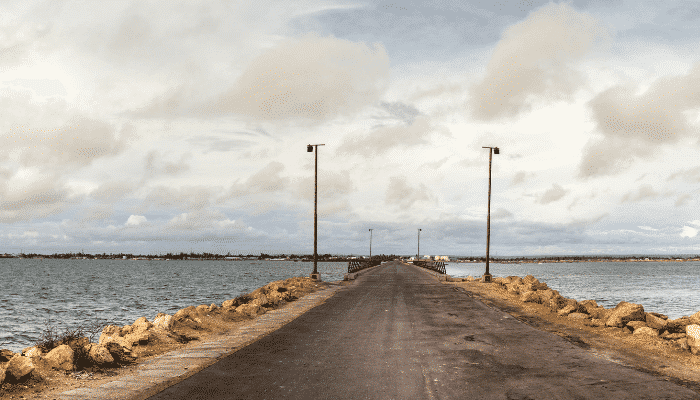
The port spans 27,000 m sq and has two wharves; a general cargo berth measuring 145 m and another container handling berth that is 170 m long, capable of accommodating ships with a draft of 7.5 m. Pipelines are connected with both docks for discharging fuel from vessels into tankers for distribution. The port handles heavy, conventional and dry cargo including ro-ro.
The storage area spans more than 4000 m sq and is mainly utilised for keeping containers. 5 warehouses are located in the main port area spanning around 2000 m sq each. No cold storage facility is available at this port and there are no reefer plugs as well.
Port equipment is privately owned by shipping companies operating at the facility. Toliara port has 3 shore cranes with a lifting capacity of 30 tonnes, 2 reach stackers with a 45-tonne capacity each, 5 trailers, and 8 forklifts with varying capacities.
Toliara port requires maintenance as the infrastructure is in poor condition and the entrance channel has to be dredged, since the average water depth along the berths is 6.5 m, due to sand deposits. Hence only small vessels can be accommodated at the port which has drastically impacted the port operations, decreasing its cargo traffic, which stands at 3000 containers per year ( as per the 2021 report).
Ehoala port
Ehoala port lies on the southeastern coast of Madagascar and comprises a harbour near a natural bay offering convenient anchorage for seagoing vessels. The port handles agricultural products such as rice, maize and sisal, dried fish, lumber, cattle, natural waxes, beans, nuts etc. Apart from being a trading port, the picturesque landscape dotted with beaches make it a famous holiday destination.
It is protected by 630 m breakwaters and was constructed for handling ilmenite exports. This port became operational in 2009 and comprises 3 wharves. The general cargo berth measures 76 m with a draft of 7.5m. There are two berths dedicated to containerised goods. One is 270 m and the other is 168 m long with drafts 11 m and 9.5 m respectively.
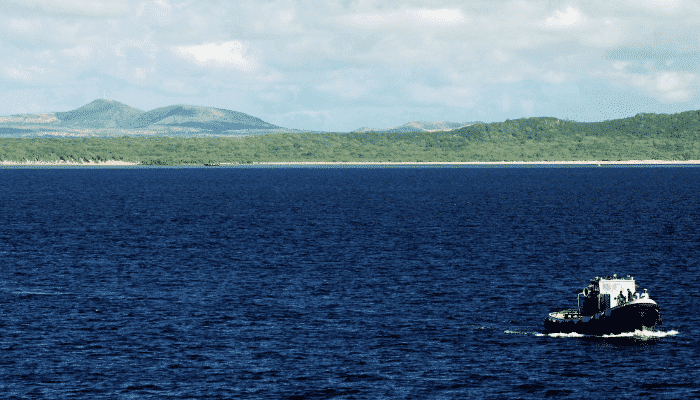
Since the old port of Toalagnaro was not a deep port, cargoes from this facility are presently handled at the deepwater Ehoala port. These include sisal, fuel oils, conventional cargo, containerised goods. After completion of the port expansion project, this port would accommodate cruise ships as well. It handles 700,000 tonnes of ilmenite, and 45,000 tonnes of Zirsill annually.
The port equipment is owned and managed by private shipping companies operating at the port. It includes 3 reach stackers, 4 forklifts, 3 trailers, 5 trucks.
The port can store a thousand containers in its storage yard. 3 warehouses covering 1200 m2 each, are located at the port to store 65,000 metric tonnes of ilmenite. A cold storage facility is also available. The port also has 6 reefer points.
Mahajanga port
This port lies on the northwestern coast of Madagascar near Bombetoka bay. It is a transhipment facility, linked with other ports such as Antisiranana. The main export products from this facility are seafood especially prawns, agricultural goods, meat, canned fish, cassava, coffee etc.
The port can accommodate small vessels and not huge cargo ships at the main dock due to decreased water depth as a result of sand deposits and irregular dredging and lack of maintenance. The port has one general cargo berth with a length of 151 m and a 5 m draft.
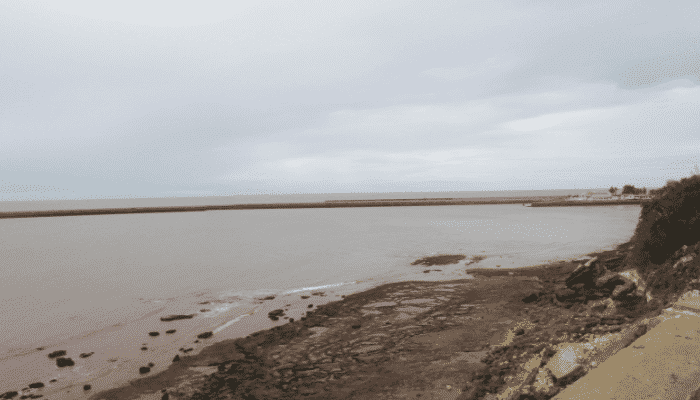
Port equipment is limited and comprises 1 shore crane with a lifting capacity of 35 tonnes, 5 mobile cranes with varying capacities. There are no forklifts or reach stackers.
The port offers storage facilities for different types of cargo. Packed goods are stored in a warehouse spanning 2200 sq m. 2 cold storage facilities covering more than 5000 sq m are available primarily for keeping seafood.
Apart from these, open storage yards covering more than 650 sq m are also used for storing general cargo.
Port Saint Marie
The island of Sainte Marie has 3 port facilities. All the essential commodities including fuel, food and other requirements of the inhabitants are met by imported items arriving from other ports.
The port has a general cargo berth measuring 150 m with a draft of 4.5 m capable of accommodating only small cargo ships, weighing not more than 250 tonnes.
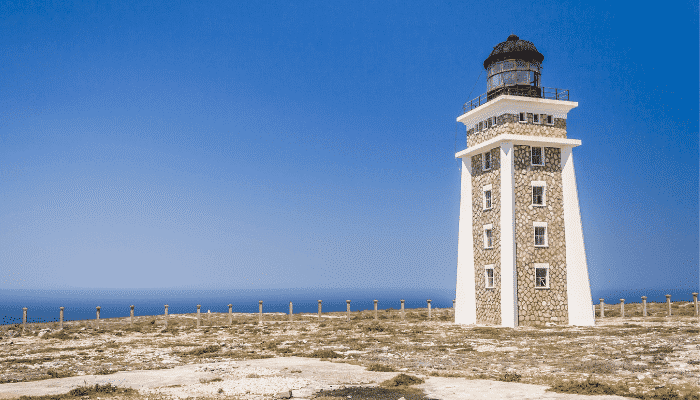
The major facility called Ilot Madame port handles all the imports. There is a second port that is frequented by passenger ships carrying tourists. The third facility is being developed to handle the increasing number of cruise ships and to promote tourism on the island.
Goods from the Ilot Madame port are transported to other parts of the island. However, the process is slow as the facility is congested, with little operational port equipment. Financial constraints have prevented the development of this important yet local port.
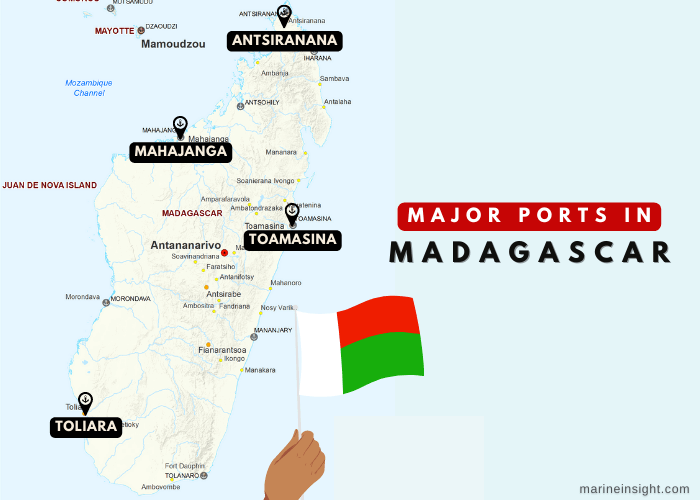
You might also like to read:
- 7 Major Ports of South Africa
- 5 Major Ports In Liberia
- 6 Major Ports in Ghana
- 9 Major Ports in Kenya
- 3 Major Ports of Angola
Disclaimer :
The information contained in this website is for general information purposes only. While we endeavour to keep the information up to date and correct, we make no representations or warranties of any kind, express or implied, about the completeness, accuracy, reliability, suitability or availability with respect to the website or the information, products, services, or related graphics contained on the website for any purpose. Any reliance you place on such information is therefore strictly at your own risk.
In no event will we be liable for any loss or damage including without limitation, indirect or consequential loss or damage, or any loss or damage whatsoever arising from loss of data or profits arising out of, or in connection with, the use of this website.
Do you have info to share with us ? Suggest a correction
Disclaimer :
The information contained in this website is for general information purposes only. While we endeavour to keep the information up to date and correct, we make no representations or warranties of any kind, express or implied, about the completeness, accuracy, reliability, suitability or availability with respect to the website or the information, products, services, or related graphics contained on the website for any purpose. Any reliance you place on such information is therefore strictly at your own risk.
In no event will we be liable for any loss or damage including without limitation, indirect or consequential loss or damage, or any loss or damage whatsoever arising from loss of data or profits arising out of, or in connection with, the use of this website.
Latest Maritime Knowledge Articles You Would Like:
Subscribe To Our Newsletters
By subscribing, you agree to our Privacy Policy and may receive occasional deal communications; you can unsubscribe anytime.















